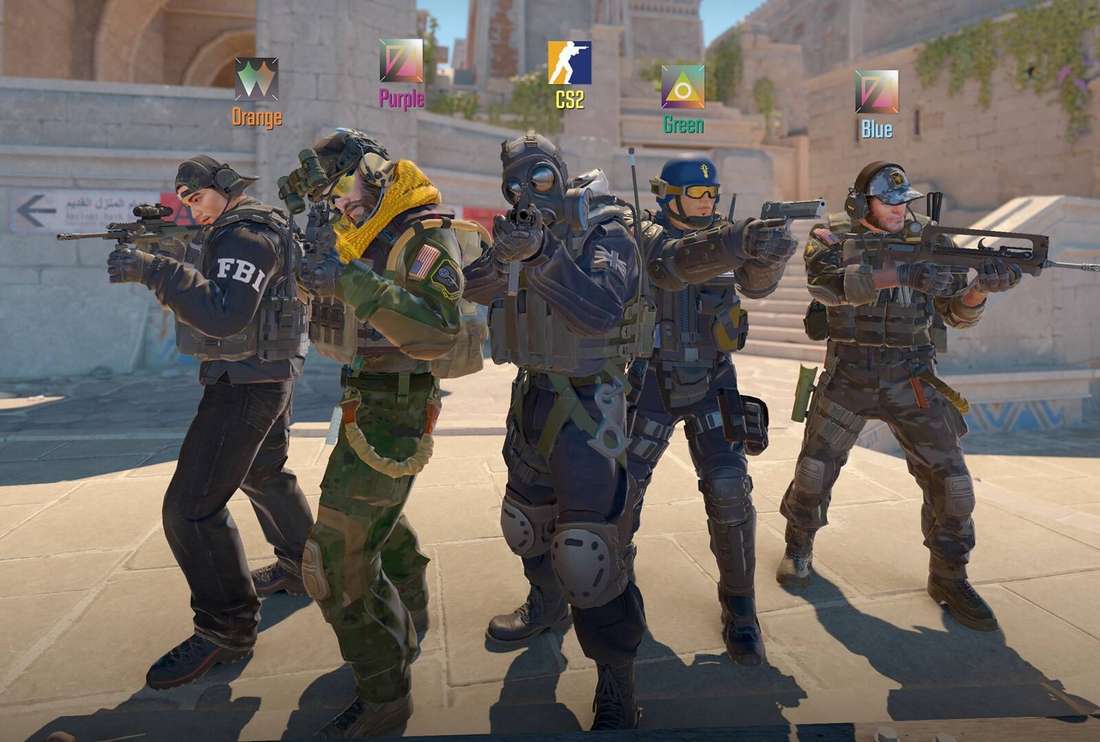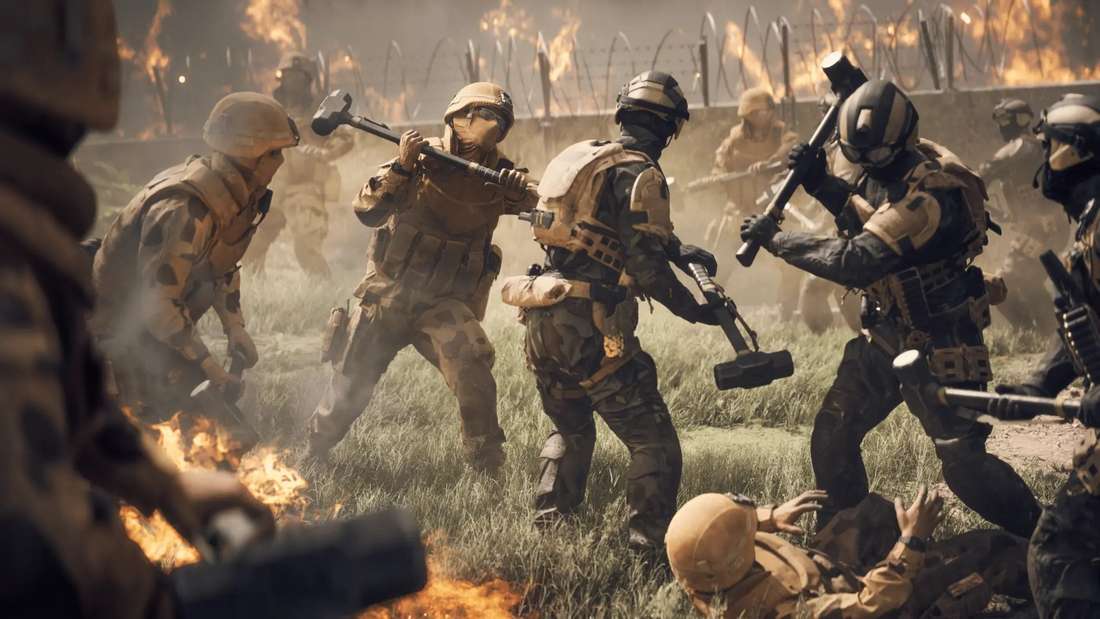BREAKING NEWS: Valve Update Triggers Multi-Billion Dollar Freefall in Counter-Strike 2 Player Economy, Wiping Out Fortunes Overnight
Popular Now
 CarX Street
CarX Street
 Auto X Drift Racing 3
Auto X Drift Racing 3
 Stumble Guys
Stumble Guys
 Roblox
Roblox
 Genshin Impact
Genshin Impact
 League of Legends
League of Legends
 EA SPORT FC 25
EA SPORT FC 25
 Valorant
Valorant
 Grand Theft Auto VI
Grand Theft Auto VI
 Free Fire
Free Fire
 The digital economy of Counter-Strike 2 (CS2), a marketplace once valued at over $6 billion, has been rocked by a catastrophic, multi-billion dollar crash. In a move that blindsided the community, Valve, the game’s developer, implemented a quiet but monumental change to the Trade-Up Contract system on October 22, 2025. This single update has effectively decimated the value of the game’s most coveted assets—Knives and Gloves—leading to a wave of panic selling and a loss of market capitalization estimated to be between $2 billion and $3 billion within 48 hours.
The digital economy of Counter-Strike 2 (CS2), a marketplace once valued at over $6 billion, has been rocked by a catastrophic, multi-billion dollar crash. In a move that blindsided the community, Valve, the game’s developer, implemented a quiet but monumental change to the Trade-Up Contract system on October 22, 2025. This single update has effectively decimated the value of the game’s most coveted assets—Knives and Gloves—leading to a wave of panic selling and a loss of market capitalization estimated to be between $2 billion and $3 billion within 48 hours.
The highly lucrative CS2 skin market, often treated by collectors and traders as a legitimate alternative investment vehicle, saw its foundation crumble when scarcity, the primary driver of value for these digital collectibles, was suddenly eliminated. The fallout is not merely a trading blip; it is a profound crisis of confidence in the long-term stability of the in-game economy and Valve’s stewardship over it.
Understanding the Valve Tweak: Supply Shock and the Rarity Rule
For years, Knives and Gloves—known as Extraordinary or ‘Gold’ items—were the undisputed blue-chip assets of the CS2 ecosystem. Their value, which could soar into the tens of thousands of dollars for a single item, was based on an extremely low drop rate (estimated at around 0.26%) from randomized weapon cases. This scarcity created immense demand and sustained the ultra-high prices, attracting high-net-worth investors and professional traders.
The new update, however, re-wrote the fundamental rule of acquisition. Players can now use the Trade-Up Contract to exchange five Covert-quality (Red-tier) skins for a single Knife or Glove from the same collection. This change immediately introduced a predictable, albeit still expensive, method for obtaining the game’s rarest items, fundamentally altering the supply-demand equilibrium.
What the Update Means:
- Increased Supply: The ability to ‘craft’ Knives and Gloves directly from Covert items has vastly increased the potential supply of these previously ultra-rare assets.
- Plummeting Gold Prices: Prices for Knives and Gloves have seen reductions of 50% or more. A high-tier skin that was valued at $14,000 before the patch is now selling for a fraction of that, causing massive losses for inventory holders.
- Surge in Covert Skin Prices: Conversely, the price of Covert (Red-tier) skins, now essential components in the new ‘recipe’ for gold items, has surged by up to 2,000% in some cases, as traders scramble to acquire the necessary “ingredients” for the trade-up contract.
The Investor Exodus and Confidence Crisis
The crash is far more than a simple shift in in-game item prices; it’s an economic event with real-world financial consequences. Many players and traders viewed their digital inventories as serious investment portfolios, particularly in regions like China where alternative investment options are limited, leading to heavy speculation and market manipulation.
The sudden devaluation has triggered panic selling across all major third-party marketplaces, which handle the bulk of high-value transactions that circumvent the Steam Market’s wallet limits. Analysts suggest the larger, long-term impact is a deep erosion of trust in Valve. The update proves that the developer holds the power to unilaterally adjust the core economic rules, effectively “rug-pulling” investors and making any future high-value investment highly speculative and risky. As one prominent trader commented, “It’s not just the supply shock; it’s the confidence issue. It was this today, what will it be tomorrow?” This uncertainty jeopardizes the inflow of high-CPC advertising revenue and external investment that had flourished around the previously stable market.
 Market Correction or Long-Term Damage? The Future of Digital Assets
Market Correction or Long-Term Damage? The Future of Digital Assets
While the immediate financial damage is severe, the ultimate impact on the long-term health of CS2 is subject to debate. Some community members, particularly the average player, welcome the change, arguing that it makes previously inaccessible skins more attainable. This democratization could potentially lead to higher player satisfaction and engagement, which is vital for the game’s sustained success.
However, the loss of billions signals a profound paradigm shift. The era of treating CS2 skins as a guaranteed, high-growth investment asset is likely over. The market must now find a new equilibrium based less on extreme scarcity and more on the intrinsic desire for the cosmetic item—a true ‘collectible’ rather than a ‘commodity.’ Valve’s motivation may be a deliberate strategy to curb the growth of the unregulated, off-platform ‘grey market’ and encourage more transactions—and thus, more revenue—through its official channels. Regardless of the intent, the company has sent a clear, undeniable message: in this digital realm, the developer is the ultimate central bank, and its decisions are final and absolute.
Strong digital asset management and risk mitigation strategies are now paramount for anyone looking to participate in the recovering CS2 market. The dust has yet to settle, and market analysts anticipate a period of extreme volatility before stabilization, with the shadow of this crash serving as a perpetual reminder of the inherent risks in the world of virtual economics.
Stay tuned to our blog for real-time market updates and in-depth analysis on the Counter-Strike 2 economy.








